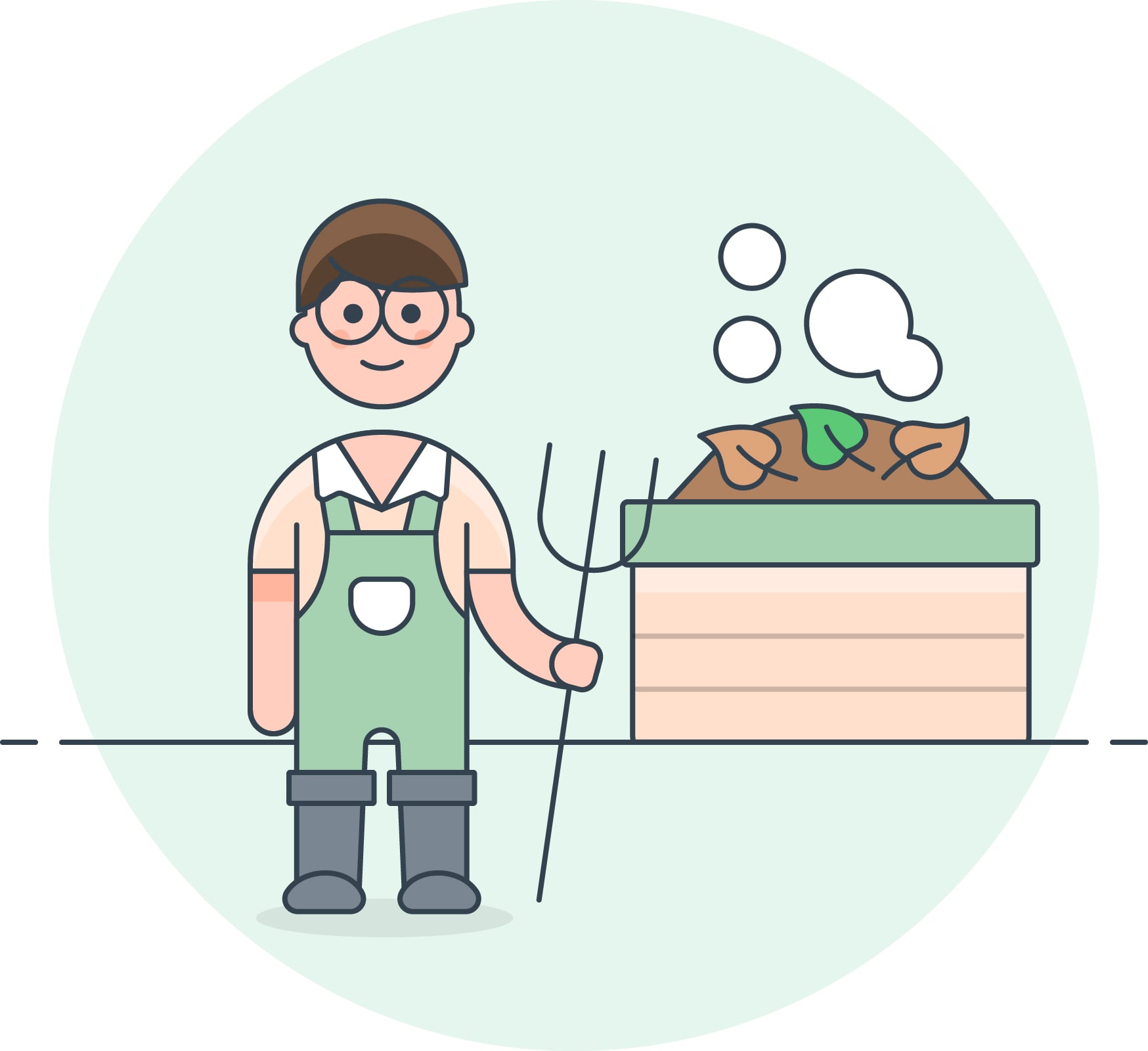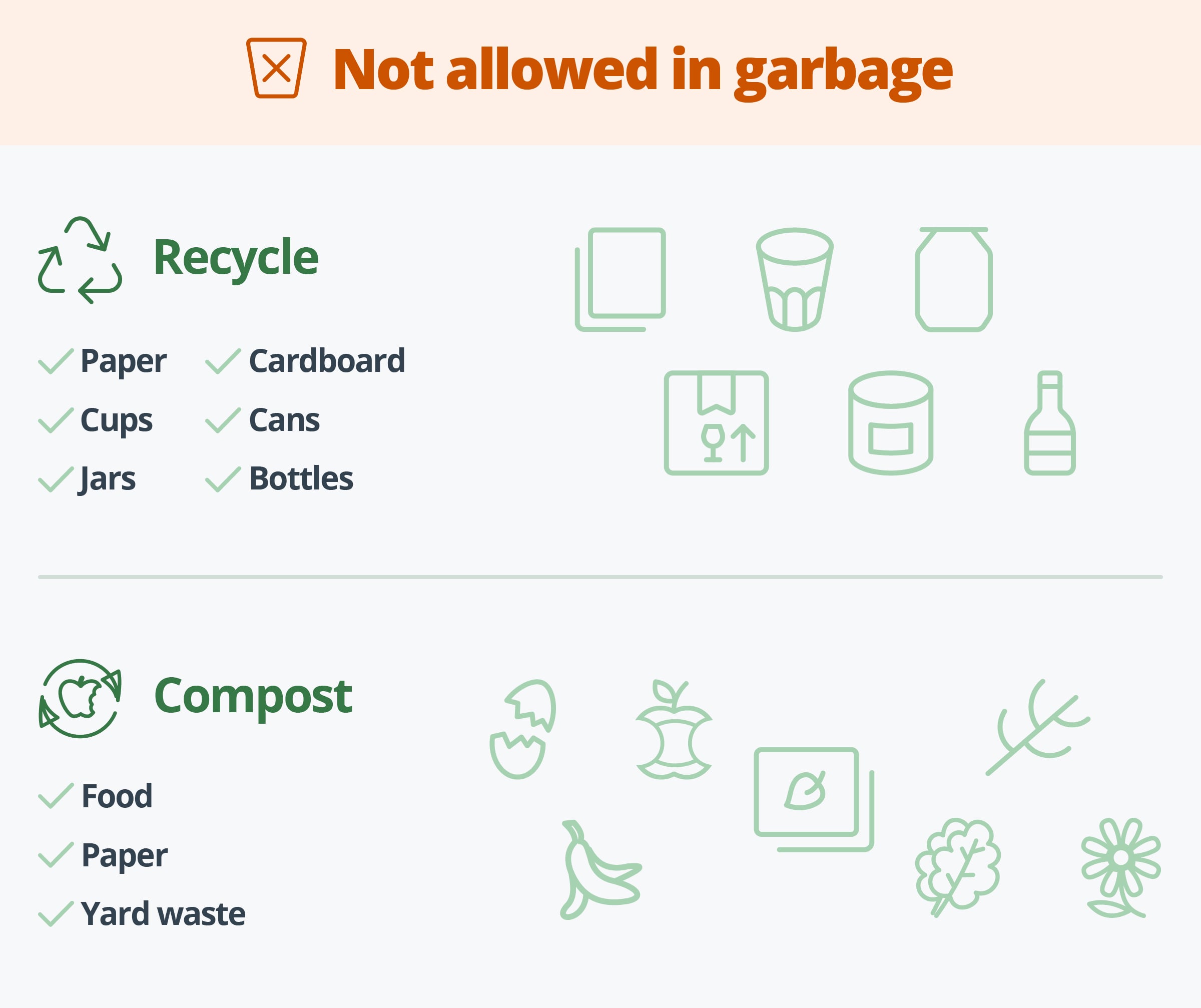Composting is definitely the most enriching form of throwing things out. Otherwise, garbage is just going to rot slowly in a landfill. Fortunately, there are a lot of ways this can be done–like shipping with Sendle compostable mailers–and more small businesses are using compostable items to become more sustainable in the long run.

Whether you toss those scraps into the yard waste bin or in your own backyard, what comes out the other side of that process is rich black soil. Perfect for growing your own vegetables at home. One Sendler in Australia even turned her small farm into a small business! Further, you are reducing greenhouse gas emissions in the long run.
Your act of casting off those carrot tops has now become heroic. And, we salute you.
If you’ve ever wondered about the difference between what that pile in your backyard is capable of and what those municipal industrial facilities can accomplish, you aren’t alone.
Compostable packaging makes this distinction (just look for the tiny writing) and it’s important to know. Can these plates be tossed in my worm bin or should I send them off to the city?
Let’s break it down. Class is now in session. 🤓
How does composting work?

The underlying mechanics of composting rely on five main variables: temperature, moisture, particle size, oxygen flow, and nutrient balance.
With the right conditions, microorganisms can thrive and eat up your old foods and yard waste. Here’s the deal:
- Temperature. An increase in temperature is the natural result of microbial activity, heating the inside of a run of the mill compost pile to over 140 degrees Fahrenheit. Higher temps also encourage further microbial growth and kill any seeds or pathogens in the pile.
- Moisture. Again, to ensure the microbes are comfy, they need a happy home. The moisture content should be at 35-60% for maximum microbial joy. This can come naturally from the ‘green’ material (more on that soon) and additional sources like rain and deliberate watering.
- Particle size. It takes more time and effort to break down bigger pieces of stuff, in general. In a commercial composting situation, pre-processing is done—via grinding and shredding—to create smaller pieces, thus more surface area on which the microbes feed. Smaller particles also help insulate and promote airflow in the pile.
- Oxygen flow. Composting, in general, is an aerobic activity (no, Jane Fonda, not those aerobics). So, oxygen needs to travel throughout the pile. This is achieved through turning (with a pitchfork or shovel) or the use of pipes below a pile and aided by the addition of wood chips, sawdust, and shredded newspaper. Without aeration, your compost may rot (anaerobic conditions) and your microbes can die off.
- Nutrient balance. To achieve the perfect balance of nutrients for your precious microorganisms, you need to feed the pile right. Specifically, you want a carbon/nitrogen ratio of 25:1 to 30:1. You find lots of carbon in ‘brown’ materials (dry sticks, leaves, wood chips) and a lot of nitrogen in ‘green’ materials (grass clippings, manure, food scraps). This affects the pH, which should stay under 7.5.
A couple of compost outliers
OK, let’s talk outliers here. While the above-mentioned variables are great and good and very true about most composting, there are a few exceptions (there always are).
First, worms. Called vermicomposting, this method uses hundreds of red worms to break down organic matter, such as (certain) food scraps and coffee grounds.
Just 1,000 worms can create up to 16 ounces of compost each day. And, like every other living thing, they multiply, doubling every three months.
Temperatures don’t get so hot in the worm bin though, with an ideal range of 60-77 degrees Fahrenheit. This means seeds and pathogens aren’t destroyed like they are in other composting methods. Pasteurization may be required.
Second, anaerobic composting. Usually, anaerobic decomposition is what happens in landfills and we try to avoid it whenever possible.
There is a method of composting called bokashi where food scraps (along with inoculated bran) are tossed in an airtight container to ferment with lactic acid bacteria. An acidic environment develops a pH of 3.5-4.5 (much higher than regular compost), which breaks down organic matter, drives out flies, and destroys pathogens.
The resulting ‘pre-compost’ is not ready for showtime and must then be buried in a hole in your backyard. The rest of the action takes place there. The liquid seeps into the soil, enriching it, and after some time, the soil in the hole is black gold!
What are the basic composting methods?

We’ve covered the main actors in the composting process and the major outliers. Now, let’s look at the traditional composting methods.
Aside from the vermicomposting and anaerobic methods, most types can be sorted under ‘hot composting’. Hot composting is faster but requires attention to keep carbon and nitrogen in the optimum ratio, compared to cold composting. On the other hand, cold composting requires minimal effort but may take a year or two before it produces compost you can use in your garden.
-
Onsite composting
This is your most basic home compost situation. A pile in your backyard that gets a turn with the pitchfork from time to time. If you mix the ‘green’ and ‘brown’ materials to a decent ratio, you’ll see good decomposition and lovely soil to show for it.
While sufficient for your vegetable scraps, coffee grounds, and leftover grains, your compost pile will not do well with meat, dairy, and fats. -
Aerated windrow
This method employs long rows (windrows) of piled compost to process and produce large quantities of compost. Using large machines called windrow turners, the rows are turned and aerated for optimal conditions.
As this method requires a lot of land, it is mainly used for commercial composting.
-
Aerated windrow
This commercial composting method uses piping and mulch at the base of the pile to control aeration. A semipermeable covering is used to seal in heat and contain odors. Since no turning takes place, monitoring is needed to ensure the entire pile heats up to the necessary temperature. -
In-vessel composting
As the name suggests, this method utilizes a vessel of some sort to maintain heat and control airflow. The increased heat that these enclosed systems are capable of producing allows for faster decomposition.
In a home compost situation, this might be a bin or a tumbler with less sophisticated aeration controls. With a fixed container, you have to get in there with a pitchfork to turn. A tumbler system can be turned by a crank, facilitating easier aeration.
In commercial composting, this can be massive metal, plastic, or concrete tanks with aeration systems built-in. Temperature, moisture, and airflow are meticulously controlled.
Check out our big guide to sustainable packaging!
What can I compost?

All organic material is compostable, in some way.
There are the more obvious things, like your vegetable trimmings, eggshells, leftover shepherd’s pie, and that moldy chunk of cheese from the back of the fridge.
Less obviously, you’ve got napkins, paper plates, compostable bags, corn plastic cups, etc. You’ve got to search for the word ‘compostable’ to be sure of some of them.
But, your backyard pile has limits that your city’s industrial composting facility does not.
What can I put in my compost heap?
Your pile can handle all the cabbage cores, beet skins, eggshells, lemon peels, tea bags, coffee grounds, paper napkins, shredded New York Times, and grains you can throw at it (respecting the carbon/nitrogen ratio, of course).
Along with that, you’ll want to include your raked leaves, grass clippings, odd twigs, and branches. Just don’t throw your meat scraps, fish bones, cheese rinds, or oily things in there.
Some home compost systems can definitely handle meat and dairy products. If you’ve got a more sophisticated composter, you’ll already understand its capabilities. It really comes down to creating the right environment for bacteria that break down proteins effectively.
What can I throw in the municipal compost bin?
Your commercial facility is a workhorse and it can take quite a lot more material than your own heap can handle. From meats and oils to all the different testing do’s and don’ts will be clearly laid out.
For example, the city of Seattle provides flyers to businesses that make clear all the items that do not belong in the garbage and where they should go instead—recycling or compost.

With simple images as a guide, it’s easy to understand what exactly is permissible to toss in the yard waste bin. Watch out for things that call themselves 'biodegradable', though. They might not break down quickly enough for composting facilities.
Some cities (like Seattle) have a mandate for composting, levying fines against those who throw away compostables. So, whether you are in an apartment or a house, you have a bin that gets taken to the composter each week.
It all comes down to process
The big difference between composting on a personal level and a municipal level comes down to sophistication.
With complete control over process variables, you can foster the necessary heat and microorganism activity that makes black gold out of rotting scraps.
The more cities that put these programs in place, the more waste we can divert from landfills. Which means less greenhouse gas emissions from anaerobic decomposition.
It doesn't hurt to lobby your city to take more aggressive action on composting. If it isn't available to you and your home composting options are limited, civic action can help move the needle.
There are a lot of reasons to encourage a more compost-friendly solid waste system. You can find all manner of commercially or home compostable materials if you look.
For retail shippers, we've got compostable bags that decompose nicely in your pile out back. Take your sustainable shipping up a notch by using Sendle’s completely compostable shipping mailers. Bury them in your backyard. Toss them in with your yard waste. Feed them to your worm farm. Whatever way you do it, these mailers will nourish the earth.

